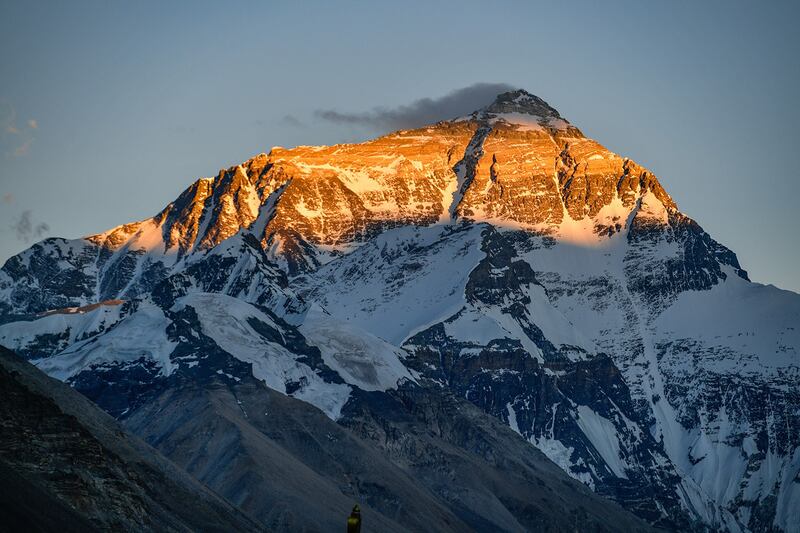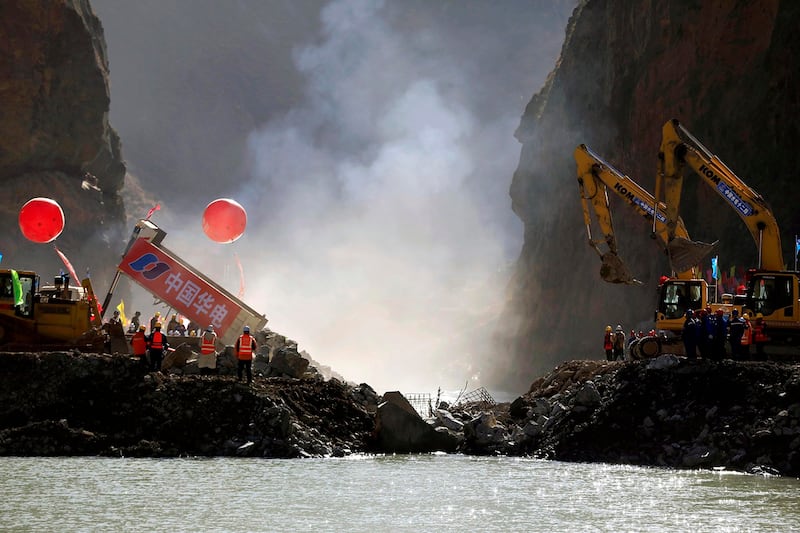The snow-covered mountains, expansive grasslands and crystal waters that cover the vast Tibetan plateau make this stretch of Earth a stunningly beautiful place.
The plateau extends over 950,000 square miles across six countries. Most of the area lies in western China and encompasses the Tibetan Autonomous Region, as well as parts of Xinjiang and the Qinghai and Sichuan provinces.
Little wonder that the peaks, glaciers and lands have spiritual meaning to Tibetans, whose Buddhist and Bon traditions connect deeply to the nature around them. Yet today, much of this culture and environment is under threat.
This week, a new phase of a large scientific expedition to survey the impact of glacier changes on the ecology and geology of the plateau was announced in Lhasa, amid alarm over the rates at which these crucial formations are melting. Other changes, including the expansion of lakes due to glacier melt, the shrinking of permafrost and destruction from human activity are rapidly extracting heavy costs.
Why is the Tibetan plateau’s environment important?
The Tibetan plateau is often referred to as the “Water Tower of Asia.” Ten major rivers in Asia originate from the plateau, including the Brahmaputra, Salween, Mekong, Yellow, Indus and Yangtze.
About 47% of the world’s population – over 3 billion people – depend on these rivers.
The plateau is also known as the “third pole” because it has over 45,000 glaciers, making it the largest glacier and permafrost reserve after the Arctic and Antarctic.
How the waters and glaciers on the plateau behave directly affects the timing and strength of the annual Indian and East Asian monsoons, according to Tenpa Gyaltsen Zamlha of the Tibet Policy Institute, a think tank of the Tibetan government in exile. Worsening heatwaves in Europe and Northeast Asia are tied to the reduced snow cover on the plateau, he said.
What are the most important glaciers in Tibet?
Among the thousands of glaciers on the plateau, several stand out for their importance in Tibetan life and for the global environment.

Amnye Machen, a mountain range in Qinghai province that consists of 40 glaciers, is one of the sacred sites for Tibetan Buddhism (revered as the home of Machen Pomra, the chief deity of Amdo, a traditional region of Tibet). It is also the primary source of Asia’s second longest river, the Yellow River. Changes around the glaciers could threaten the lives of over 100 million people in the Yellow River Basin.
“Amnye Machen has been sacred to us for centuries, but it’s disheartening to see it melting rapidly due to climate change. I fear its stories may be lost with the mountain,” Palden, a Tibetan journalist from Amdo Golog now living in Dharamshala, told RFA.
Mount Kailash (Gang Rinpochen), located in Ngari in the western Tibetan plateau, is called the “Precious Jewel of Snow.”Its glaciers are the primary sources of the sacred Lake Manasarovar (མ་ཕམ་གཡུ་མཚོ།) and the headwaters of four major rivers: the Brahmaputra, Indus, Sutlej and Ghaghara. These rivers are crucial for millions of people in Asia.

Mount Everest (Qomolangma), which lies on the border between Nepal and Tibet, is revered as the “Goddess Mother of the World.” The glaciers on this mountain range have been rapidly losing ice. A 2022 National Geographic study found that Everest has lost the equivalent of 2,000 years of ice in just three decades.
A recent study by scientists from the Chinese Academy of Sciences found that since 1960, temperatures in the Mount Everest region have risen by about 0.33°C (0.6°F) each decade.
Purog Kangri, (བུ་རོགས་གངས་རི།) covering over 400 square kilometers, is the largest glacier in the world outside of the glaciers in the South and North poles. Some 560 kilometers (348 miles) from Nagchu town in north of Lhasa, Tibet, it is vital for water supplies, ecological balance and climate regulation. The glacier’s melt is accelerating, Chinese scientists have found. The scientific expedition announced over the weekend will focus on studying this glacier, along with two key lakes and four rivers on the plateau.
In what other ways are humans changing the plateau’s environment?
Mining and dam building are also hastening changes to the environment on the Tibetan plateau. Much of the activity is backed by the Chinese government, which argues that these projects drive economic growth, produce electricity and improve local people’s living standards.
In Qinghai, Beijing has recognized 346 gold mining sites. Just recently Chinese researchers have found 43.2 tonnes of gold with an estimated value of $2.77 billion in the region, which officials say will boost growth in mining industry investment.
Chinese state-backed firms have been mining minerals such as copper, steel and gold around Amnye Machen since 1993. However, run-off from these operations have contaminated waters and heavily damaged nearby and downstream ecology. Locals in Maqin county (རྨ་ཆེན་རྫོང་།) in Amdo Golog have repeatedly petitioned the Chinese government to stop these activities.
According to Palden, the Tibetan journalist, mineral extraction continues near Amnye Machen today.

China has been continuously building dams on the Yellow River since 1957. Between 2016 and 2019, the Chinese government built 12 dams on the river, RFA has reported. In 2023, China again approved a major hydropower plant on the Mekong River in the eastern part of the Tibet Autonomous Region, with an investment of more than 58 billion yuan (roughly $8.1 billion). Earlier this year, a new Chinese dam on the Ghaghara River in Ngari, close to Mount Kailash, appeared to be completed, reported Newsweek. This development could have major strategic consequences, potentially giving China the ability to influence water flow into India and Nepal.
Dam building has led to ecological and cultural destruction: plans to build the Yangqu Dam on the river in Dege county in Kham Karze led to the demolition of an 113-year-old monastery earlier this year.
A 2022 report on Yellow River from the Asian Development Bank noted that land use changes and human activities have increased soil erosion in the basin by about 40% and that the river’s flow has declined.
What changes are climate activists pushing for in Tibet?
Experts warn that expanding lakes on the plateau could worsen global warming and affect the water supplies for millions of people downstream.
Tibetans and environmental activists have urged the U.N. and world leaders to address climate change on the plateau, highlighting its crucial role on global systems.
Why urgent action is needed on the Tibetan Plateau’s climate crises?
There have been calls to halt Chinese dam projects, plant new forests, recognize and protect sacred glacier mountains, and involve local Tibetan communities in the protection of natural resources.
Chinese scientists have also called for further study and protections on the plateau. Yao Tandong, the leader of the Chinese scientific expedition, has warned that the decline in glaciers and snow cover on the Tibetan plateau might cause major changes in the Asian monsoon circulation, potentially leading to more frequent extreme weather events in China.
“It is essential to strengthen the construction of early warning systems for glacial collapses and glacial lake outbursts, and to implement more effective measures for sustainable water resource management,” he said.
On the occasion of the U.N. COP26 climate conference in 2021, the Dalai Lama said that the preservation of Tibetan ecology is not only in the interest of the 6 million Tibetans but also millions of people in Asia. “The world belongs to all of us, so we need to stop consuming out of greed and be mindful of our actions,” he said.
Edited by Boer Deng.
